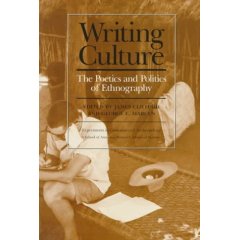This project begins with a collection of questions extracted from the texts of anthropologists, curators and theorists, in their writings on issues of globalisation as they relate to the field of contemporary arts. Writers include Pierre Bourdieu, a French sociologist whose work in the fine arts has focused on class-bound aesthetics, James Clifford and George Marcus, editors of an important collection of texts regarding the textual turn in Anthropology: “Writing Culture”, Jessica Bradley, curator and repeat Canadian commissioner for the Venice Bieannale, Trinh T. Minh-Ha filmmaker and experimental ethnographer, Joseph Beuys, artist, Walter Grasskamp, critic and writer, and finally, Slavoz Zizec, contemporary Slovenian social theorist.
Five examples of the 100 questions collected include:
1. How are careers made today?
2. What are the boundaries of taste?
3. How can the museum and those in charge of it end thier isolation and make it the scene of this special kind of creativity that is concerned not only with the plastic arts and music, but also with democracy and the economy and production?
4. Do you regard the museum as a better institution than a university?
5. When the pilgrimage of curators, artists, dealers and collectors has moved on to the next event, what is the effect of such exhibitions outside the art world, if any?
From this collection the project progresses through the following four steps:
1. Automatist Writing Performance.
In this performance I will write one 11×17 page in response to each of 50 questions selected from the question collection described above. This writing will be documented by visual anthropology students, Jessi Currell and Anna Teeple. As well as a “documentation of the documentor” this writing will emphasize notions of repetition and duration, as explored in the works of Robert Racine, Eric Satie, Philip Glass.
2. Questionnare.
One dozen of the questions will be reformatted and included on a three-page formulaire, to be distributed among members of the Montreal-based arts collective Team A, students of the Design and Computation Arts Graduate Certificate Program and Anthropology Honours Thesis Seminar. No documentation (except their written answers) will be collected from this stage. Participants will have two weeks to respond (from January 9, 2007 to January 23, 2007). Answers must be written in the space provided.
3. Survey.
Questions will be again condensed and included on a one-page folding survey, to be distributed with self-addressed, stamped envelopes to 100 strangers as follows:
a. the Concordia University Library – January 10, 2007
b. the Montreal Museum of Fine Art – January 11, 2007
c. the Canadian Centre for Architecture – Januray 12, 2007
Recollection of surveys will be completed by February 1, 2007, at 12:00.
4. Publication and Comment Card
Extracts from the above three stages of response will be published in a “newspaper” including writings solicited from Journalism and Art History students. Each of 100 “newspapers” will include a post card, or “comment card” insert requesting reader response to one rhetorical question related to “writing” as a key element in contemporary cultural production and creativity, (these responses may be used in future projects.)

0 Responses to “approach”